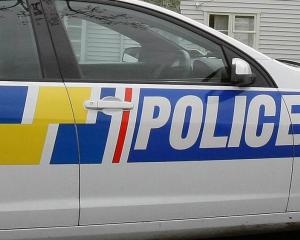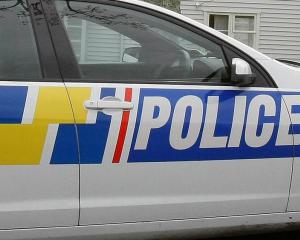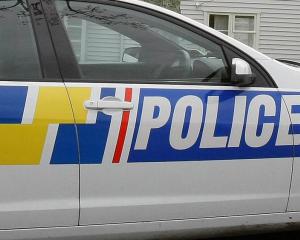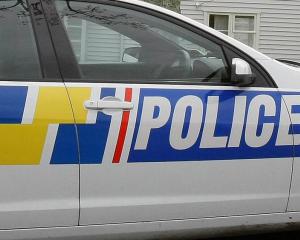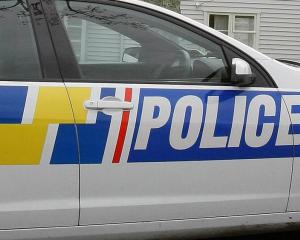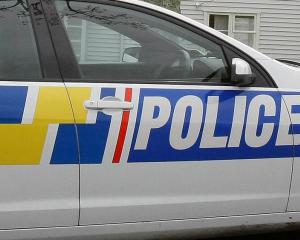At least 11 patrol cars and the police helicopter were unnecessarily pursuing a motorcyclist at speeds up to 122kmh when he crashed and suffered severe brain injuries, a police conduct review has found.
The Independent Police Conduct Authority has released a report into the 25-minute pursuit through Auckland, finding it "lacked adequate command and control and was plagued with communication issues and breaches of police policy".
The pursuit on March 27, 2010, ended when the motorcyclist, 34-year-old Dion Troy Batt, crashed into a traffic island on Don Buck Rd at Massey.
He was first pursued after being seen riding his motorcycle at more than 100km/h in a 50km/h zone.
The authority has made seven recommendations for police, including changes to pursuit policies.
It found multiple issues with the pursuit, including patrol cars deployed by three different dispatchers, a road block set up without authority and the pursuit by an officer on a motorcycle who failed to tell of his intentions before pursuing Mr Batt at 122km/h in a 50km/h zone.
Assistant Commissioner Allan Boreham said police accepted there were shortcomings and they were being addressed.
He said fleeing drivers were "always extremely testing for police" and noted Mr Batt was found to have methamphetamine in his blood after the crash.
"As the [authority] notes, Mr Batt demonstrated by his actions that he was prepared to risk his life and the lives of others to avoid police," Mr Boreham said.
He said that since the incident, the Auckland region had upgraded to digital radio, giving more coverage than was available in 2010.
"The radios themselves are easier for staff to operate. We've also put hands-free kit in cars," Mr Boreham said.
The pursuit of Mr Batt began about 9.24pm after he was seen speeding.
That pursuit was abandoned by the controller at the Police Northern Communications Centre (NorthComms) within three minutes because he felt the risks involved were too high.
Units in the area were then advised by the NorthComms dispatcher for the North Shore radio channel to search for the motorcyclist.
The Police Eagle Helicopter located Mr Batt within five minutes and advised the dispatcher.
At least 11 patrol units, controlled separately by the North Shore, Western and Metro dispatchers, then became involved and drove towards Mr Batt as he rode south on the Northern Motorway and west on the Upper Harbour Highway and Hobsonville Rd.
"Most of the units were driving at speed," the authority's report said.
"The involvement of three dispatchers on three separate radio channels caused serious communication difficulties between NorthComms and some of the police units."
There was a lack of command and control by NorthComms, "largely due to the fact that the pursuit controller had not been notified that Eagle had located Mr Batt".
This created confusion as to the status of the pursuit (active or abandoned), which channel was running the incident, and the number of units involved.
At 9.44pm an unauthorised road block was set up by a West Auckland unit on Hobsonville Rd.
Mr Batt rode through the road block before speeding away.
The pursuit controller, who was by then aware that the incident had continued, ordered all units, including the helicopter, to abandon the pursuit.
However, this order was not given over all three radio channels and some units did not hear it.
A motorcycle officer on the Metro channel did not hear the order to abandon and, without communicating his intent to NorthComms, began pursuing Mr Batt onto Don Buck Rd reaching a maximum speed of 122km/h in a 50km/h zone.
A short time later, Mr Batt crashed into the traffic island and suffered serious injuries.
The authority found the initial attempt to stop Mr Batt on Whangaparaoa Rd was justified and the decision to abandon that pursuit was the correct one.
The continuing pursuit afterwards breached several police policies.
The authority said the actions of police "were undesirable".
"These were mainly in connection with poor command and control, communication and risk assessments," it said.
Mr Boreham said pursuits were dangerous and "are fast-moving, unpredictable and high pressure situations that require quick judgements".
"The public expect us to get it right. We take that responsibility very seriously and are always looking for ways to manage these challenging situations better," he said.
Recommendations
The Independent Police Conduct Authority made seven recommendations:
- Amend the fleeing driver policy so that dispatchers are required to: give a specific warning when a search phase is commenced; notify the pursuit controller when the fleeing vehicle is located during a search phase; and clearly state when the search phase has ended
- Review and amend the fleeing driver policy and the police air operations policy to ensure that the role and responsibilities of Eagle during a fleeing driver incident are clearly defined
- Review and amend the fleeing driver policy to include, under the heading 'Risk assessment factors', consideration of the type of vehicle the offender is driving
- Review and amend the fleeing driver policy so that: the pursuit controller is responsible for directing units to change radio channels during a fleeing driver incident, and is required to consider the operational capabilities of the police vehicles involved in the pursuit before doing so; and all units that have been directed to change channels must do so when appropriate and identify themselves to the dispatcher on the dedicated channel
- Review the steps needed for officers to change radio channels whilst responding to an incident to ensure that this action can be completed in a timely manner and with due regard for safety
- Review the impact the audible siren has on an officer's ability to hear the police radio and seek improvement to this operational capability if required
- Clarify their policy in respect of the use of road blocks/road closures, providing an explanation of the law and whether their use during a fleeing driver incident is acceptable and ensure that any such clarification of policy is reflected in officer training
- Kieran Campbell of APNZ

